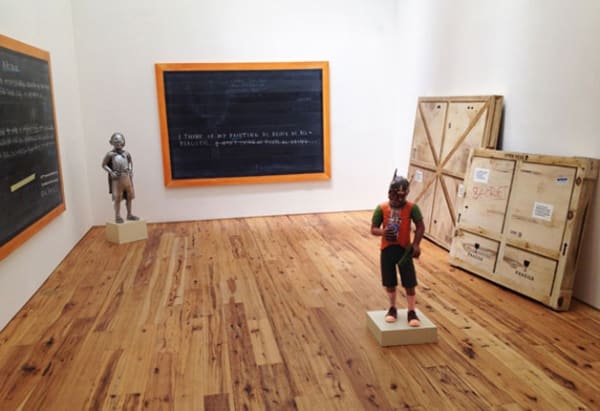Yogyakarta
Yogyakarta: Five Artists From Indonesia
The art world is now global, and China has surpassed London as the second largest market. Art from India is booming onto western markets. The Hong Kong Art Fair is now owned by the venerable Basel Art Fair. New York galleries have set up large spaces in Beijing. Artists from Cape Town and Cluj, Romania are part of the vibrant market and yet Indonesia, with over 200 million people, remains mostly neglected.
Yogyakarta on Java is the renowned center of Javanese art and culture; it is also the second largest tourist destination in the country after Bali. Here there is a major confluence of contemporary artists who are well-known in their home country, some are well-known in the Pan Pacific, but they are virtually unknown in the US and Western Europe. This is changing. Some good gallerists and curators are starting to pay attention.
The gallery is proud to present an exhibition of five major artists from Yogyakarta, most of whom have never before exhibited work in the US. They are painters and sculptors whose works often resonate with Javanese culture, but, as with the best artists anywhere, they stand alone as highly accomplished and personal. They may reference European works, or even Western Pop culture. The internet and ease of travel has indeed changed everything.
JUMALDI ALFI is a master painter whose “Blackboard paintings” might bring to mind Twombly and Beuys, but such comparisons quickly fade. The scored paint surface and the specificity of the language are absolutely contemporary, but also seasoned. These are works that have taken over a decade to come to.
FENDRY EKEL was born in Indonesia, studied in Amsterdam, and now returns to Indonesia. His paintings of iconic figures, such as Leon Trotsky and Charlie Chaplin, are visual amalgams of European and Indonesian influences.
ABDI SETIAWAN’s sculptures and canvases have more regional cultural specificity, political overtone, and humor, but are accomplished and edgy. They remind perhaps of the tongue-in-cheek work of Cattelan.
YUNIZAR’s paintings are the most obviously “local,” but this is no different than saying that Tapies is clearly Spanish and Neo Rauch is clearly German. All three draw from localized vernacular to make art that can speak to a universal audience.
ERIANTO, not surprisingly, is the youngest of the group and his canvases could be the result of 21st Century camouflage research at Cal Tech; paintings of the crates containing paintings at institutions like MoMA – sly and incredibly rendered.


